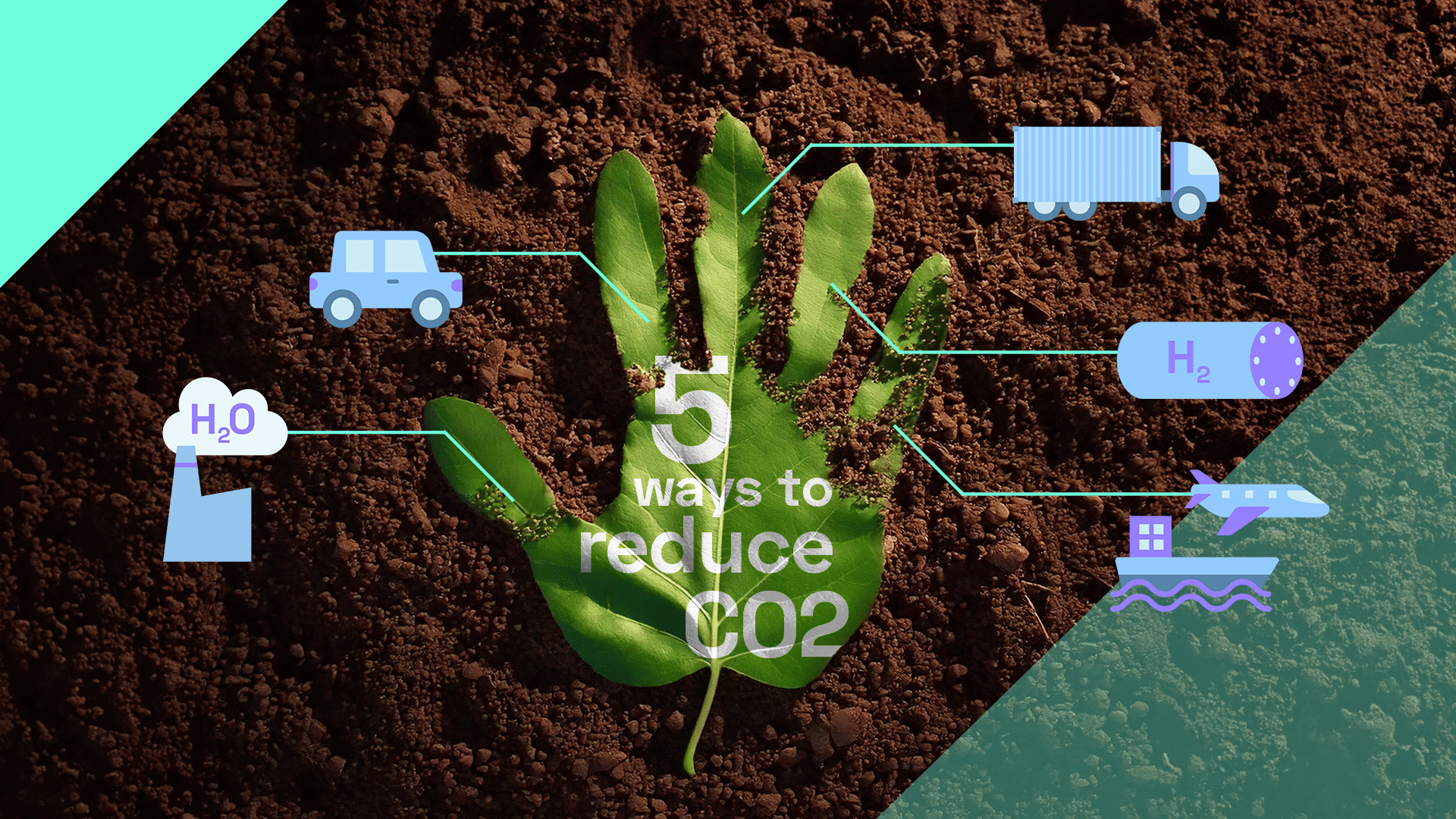Published the 22/10/2024

Key Points We Covered in This Article
- Carbon Footprints: What is our invisible impact on the planet?
- Find out why green hydrogen is not an option but a necessity.
- Collaboration is key: collective efforts can amplify the green revolution.
- Ready to make a difference? We share 5 ways to reduce CO2 emissions with green hydrogen.
A Call to Action for Our Planet
The world stands at a critical crossroads. As the effects of climate change intensify, every individual, company, and government must take responsibility for their carbon footprint—the invisible trail of greenhouse gases we leave behind with every energy decision we make.
In this article, we will explore how green hydrogen is one of the game-changers in reducing carbon footprints and why it is not just an option but a necessity for a sustainable future.
What is a Carbon Footprint?
At its core, a carbon footprint represents the amount of greenhouse gases (GHGs), primarily carbon dioxide, that an activity, individual, or organisation emits into the atmosphere. These emissions are measured in CO2 equivalents, giving us a clear picture of our impact on global warming.
Green Hydrogen is Transforming the Way We Reduce Carbon Footprints
Imagine an energy source so clean that its only byproducts are water and oxygen. That is the promise of green and renewable hydrogen produced every day at Lhyfe. Using electrolysis powered by renewable sources like solar and wind, our green hydrogen is revolutionising how we approach energy.
Why Green Hydrogen is Vital in This Story?
- Because it is a cleaner energy alternative that can replace fossil fuels, particularly in industries like chemicals, metallurgy, and glass, as well as in mobility sectors such as transportation and logistics.
- It is powering the unstoppable green transition through renewable energy such as solar and wind power.
- Finally, green hydrogen is fuelling the future by creating opportunities for zero-emission vehicles.
The Power of Collaboration: Every Voice Matters!
Green hydrogen is not just a solution waiting to be discovered—it is here, and its success depends on collective action. This challenge is bigger than any one government, industry, or individual. It requires collaboration on a global scale.
In building a sustainable energy mix that includes green hydrogen alongside renewables like solar and wind, collaborative efforts are crucial. By working together, we can optimise the use of diverse energy sources, ensuring a reliable and environmentally friendly energy supply while reducing our carbon footprints.
At Lhyfe, we understand the power of partnership in advancing green hydrogen. To see how diverse initiatives and innovative partnerships are driving this green revolution, discover the inspiring examples of our collaborations.
5 Ways to Reduce Carbon Footprint with Green Hydrogen
1. Clean Up Industrial Production: Green hydrogen is a powerful alternative to fossil fuels like natural gas and grey hydrogen which is produced from fossil in industries like steel and chemicals, helping reduce emissions and drive sustainable innovation.
2. Switch to Hydrogen Vehicles: Hydrogen-powered fuel cell vehicles (FCEVs) offer zero-emission transportation. By adopting hydrogen-fuelled cars, buses, trucks, and trains, we can significantly cut the transportation sector’s carbon footprint. For instance, in La Roche-sur-Yon, located in the Vendée region of France, hydrogen is already being used to power public transport and waste collection vehicles. This green hydrogen is produced locally by Lhyfe, demonstrating a practical and sustainable approach to mobility.
3. Transform Logistics Operations: Hydrogen-powered vehicles are essential for decarbonising logistics. In warehouses and distribution centres, hydrogen fuel cell forklifts and other equipment offer a clean alternative to fossil fuel-powered models. For instance, Lidl has implemented hydrogen-powered forklifts in its operations, displaying its commitment to sustainability and the potential of green hydrogen to reduce emissions in high-demand environments.
4. Use Green Hydrogen for Clean Energy Storage: Green hydrogen facilitates the conversion of excess renewable energy into a storable form, ensuring a steady supply of clean electricity even when wind or solar power generation is low or unavailable.
5. Decarbonise Shipping and Aviation: Green hydrogen has the potential to transform shipping and aviation by offering a clean alternative to the fossil fuels that currently dominate these carbon-intensive industries. By leveraging green hydrogen as a fuel source, we can significantly reduce greenhouse gas emissions and enhance energy efficiency in global transportation.
FAQ
1. What is a carbon footprint?
A carbon footprint measures the total greenhouse gas emissions caused by an individual, organization, or activity, usually expressed in CO2 equivalents.
2. How does green hydrogen help reduce carbon footprints?
Green hydrogen, produced using renewable energy, offers a zero-emission alternative to fossil fuels, helping to cut carbon emissions in transportation, industry, and energy storage.
3. What are the top ways to use green hydrogen to lower carbon footprints?
Revolutionise industrial processes, adopt green hydrogen in vehicles, decarbonise logistics, store excess renewable energy, and transform shipping and aviation to effectively reduce carbon emissions.
Want to learn more? Visit our FAQ page to find more answers to common questions.